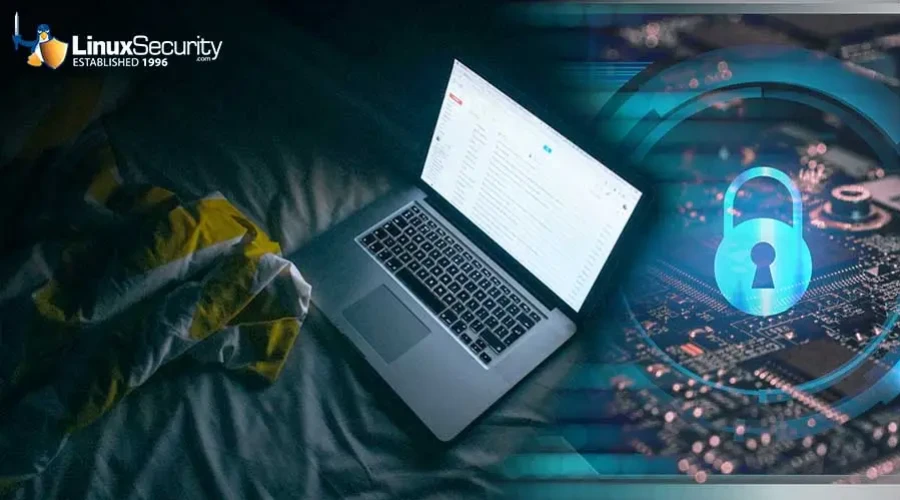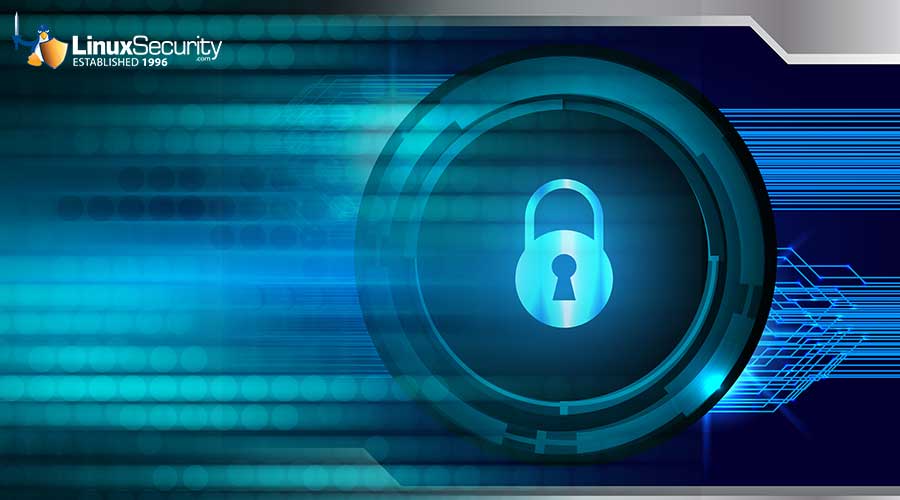Closing the Security Gap: Navigating Modern Technology and Outdated Systems in Linux Security

Most businesses understand the need for cybersecurity. However, many of those same companies still rely on outdated systems, making it hard to ensure the security they know they need.
Technology moves quickly, so it’s easy to fall behind the latest innovations, especially when facing budgetary constraints. As understandable a problem as it might be, legacy IT poses a host of security issues. Thankfully, modernization through Linux security is possible.
We’ll examine how modernization through Linux security can help close the security gap and offer practical advice to help you navigate modern technology and outdated systems and ensure security in your Linux environment.
What Are The Security Risks of Outdated Technology?
Before you learn how to bridge the legacy security gap with Linux, you must understand why it’s essential. Outdated technology — hardware and software — is a severe threat for three reasons.
Unpatched Vulnerabilities
 The most obvious risk of outdated systems is that they don’t have the latest security patches. Once developers stop supporting an app or operating system (OS), any unpatched vulnerabilities will remain that way.
The most obvious risk of outdated systems is that they don’t have the latest security patches. Once developers stop supporting an app or operating system (OS), any unpatched vulnerabilities will remain that way.
As mundane as software patches may seem, ignoring them can cause much damage. The infamous WannaCry ransomware grew by 53% between 2020 and 2021 despite the necessary patch being around since 2017. In fact, that patch was available before WannaCry hit its peak. All the losses stemming from this ransomware worm are due to outdated software.
Of course, new technology can still have vulnerabilities. However, supported versions can eventually get a fix for these issues, whereas legacy software can’t. Cybercriminals know this, so they often target organizations they know will likely use outdated, vulnerable systems.
Lack of Modern Protection
Similarly, older systems won’t have the same built-in protections as newer alternatives. The more cybercrime has grown, the more seriously businesses have taken it. As a result, cybersecurity best practices have come a long way over time, so outdated IT may lack the defenses you’d expect today.
Things like multifactor authentication (MFA), firewalls, and intrusion detection come standard in many modern hardware. You can’t say the same about older systems; without these protections, you can’t employ the best practices you know you need.
More worryingly, it may not be evident that these features aren’t there. Some built-in protections are common enough with new devices you don’t think about anymore. You’d naturally expect them to be there. Consequently, you may not double-check this on an older device or use it the same way out of habit, overlooking the lack of needed protections.
Incompatibility With New Resources
Sometimes you can install modern protections on an old system when not built in. However, that’s not always possible. As systems age, you’ll find fewer resources supporting them. This incompatibility can cause efficiency problems and create security vulnerabilities at worst.
The cloud — which 70% of businesses plan to run some office systems in within two years — isn’t a perfect solution, either. While cloud-based systems largely work around OS limitations, older devices may lack the necessary memory or processing speed to run them efficiently.
Cloud platforms won’t reach their full potential if you assess them on outdated systems. Any latency can create openings for cyberattacks. Not all your resources are on the cloud, so even if migration offsets some aging infrastructure, you’d still encounter compatibility issues elsewhere.
What Are the Security Advantages of Linux for Older Systems?
Given these dangers, it’s easy to see how outdated technology is a considerable risk. Still, upgrading hardware — especially on a companywide scale — can be expensive and complicated. One promising alternative is to remove the outdated OS and install Linux instead. Here’s why.
Compatibility
When you switch to Linux, you no longer have to worry about a lack of support for an outdated OS. Many distros are free or low-cost, so it’s cheaper than buying a new proprietary OS but has the same modernization effect. You can install Linux quickly and efficiently to give your old hardware support for new software.
Not every application offers Linux support, but many do. Linux fuels over 90% of web servers and internet-connected devices, and enterprise developers are particularly fond of open-source software. That’s all to say you won’t have much trouble finding modern tools you need that can run on Linux.
Gaining this compatibility opens the door to newer security systems and interoperability with new hardware. You can use more robust defenses without a lengthy, expensive upgrade process.
Open Source Support
 When you modernize with Linux, you also gain support from the open-source community. This has two main benefits in terms of cybersecurity. First, you have a much wider group contributing to vulnerability patching. Secondly, you don’t have to worry about your software eventually becoming outdated because you have ongoing support.
When you modernize with Linux, you also gain support from the open-source community. This has two main benefits in terms of cybersecurity. First, you have a much wider group contributing to vulnerability patching. Secondly, you don’t have to worry about your software eventually becoming outdated because you have ongoing support.
A whopping 89% of IT leaders agree that open-source software is as or more secure than proprietary alternatives. Most say this security stems from confidence that the software is well-tested, thanks to the large community of contributors. With more people analyzing and updating the code, bug fixes are faster, and audibility is easier.
Similarly, Linux resembles the as-a-service model in terms of lifetime support. Instead of replacing old versions with new ones, the community keeps improving existing resources. As a result, you can always have the latest Linux version, ensuring you don’t lose compatibility with newer systems.
Performance Improvements
While Linux won’t change your hardware, it does help you make the most of it. Linux distros are often lightweight and don’t run as many background applications as proprietary systems like Windows or MacOS. As a result, they can give your old IT a needed performance boost.
Independent testing shows that Linux is up to twice as fast as Windows in many processes. That speed means you can use newer cloud or local resources efficiently despite having outdated hardware. Using more modern systems means you can benefit from their security improvements over older versions.
These performance boosts also mean your IT systems can respond to security threats faster. Response time is a huge factor in how much damage an attack does, as it lets you stop it before it spreads. That’s particularly important for anyone dealing with highly sensitive data.
How Can I Modernize and Protect My Linux Systems?
Now that you know why you should modernize your security with Linux, it’s time to learn how. Securing and updating outdated systems looks slightly different in each instance, but there are a few general guidelines to follow.
Choose Your Distro Carefully
The first step in bridging the legacy security gap with Linux is to choose the right distro. You can choose from hundreds of distros; the best choice for one company may not be the best for you. Start by determining your needs and obstacles, including your budget, hardware constraints, tech skill level, and modernization goals.
Ubuntu is the most popular Linux distro and has a reputation for user-friendliness, making it a good choice if your team doesn’t have much tech experience. RHEL is another popular choice for businesses for its security features and scalability.
Before choosing a distro, ensure any software or hardware you want to use supports it. It’s also a good idea to read community reviews to learn common problems people have with it and what they like. You should also keep long-term expansion in mind, so look for something with enough update frequency to support your scaling rate.
Transition Slowly
Compared to other security modernization methods, switching to Linux is relatively easy. Still, it’s best to take a slower, methodical approach than to transition everything simultaneously. Moving to any new system involves a learning curve, so a slower shift will let you work out the kinks without disrupting your entire business.
Start with your systems in most dire need of an upgrade. These may be your oldest resources, but they could also be ones that have more significant security issues due to their age. Be sure to back everything up before moving it to Linux.
Remember that switching to Linux may look different for various parts of your IT system. You may even want to use different distros for separate functions. Many businesses do. This variation can help you make the most of each part of your operation, but it necessitates doing things one at a time to prevent mix-ups and disruption.
Remove Unnecessary Features and Settings
 Next, you’ll want to look for features or apps you won’t use in your work. While Linux has comparatively little bloatware compared to other operating systems, your distro may still have apps you don’t need. Your tech stack may also include features you don’t require anymore.
Next, you’ll want to look for features or apps you won’t use in your work. While Linux has comparatively little bloatware compared to other operating systems, your distro may still have apps you don’t need. Your tech stack may also include features you don’t require anymore.
Removing these unnecessary features serves two critical functions. First, it minimizes the number of ports and potential openings attackers can target. Secondly, it frees resources to ensure better performance, which is especially important for older hardware. Pay special attention to internet-connected apps, as most Linux attacks are web-based.
Similarly, you should turn off any unneeded settings. Some distros or apps may have unsafe features like automatic connections to other devices on the network that increase your attack surface. Deactivate anything your team won’t take advantage of to be as safe as possible.
Monitor Your Systems Closely
Once you have your systems up and running on Linux, remember to monitor them. Ongoing monitoring is a good idea in any context, but it’s more pressing when using older equipment or after switching to a new system.
Linux aids these audits by maintaining detailed system logs. Don’t overlook that resource. Review your file and system access history regularly to ensure you catch potential breaches as early as possible.
While monitoring your Linux system manually is possible, automated approaches are more efficient. Look for an automatic detection and response platform compatible with your distro to free your IT team’s time and contain potential issues faster.
Update Often
Finally, as with any software, you should update your systems regularly. Linux’s extensive community support is only advantageous if you take advantage of it. Download and install updates as soon as they’re available to maximize your performance and patch all bugs.
Known vulnerabilities as old as 2017 are still more prominent than zero days. It’s far more cost-effective for attackers to target known weaknesses in hopes businesses haven’t patched them than to discover new ways around defenses. Many people also overlook updates, adding more fuel to this fire.
Enable automatic updates to stay as safe as possible. Remember, the goal is to modernize your security everywhere you can. You can’t do that if you don’t install the latest software versions when they become available.
Final Thoughts on Bridging the Legacy Security Gap Today
Legacy systems pose a huge threat to cybersecurity today, but it may be easier to overcome them than you initially think. Linux’s open-source nature, accessibility, security by design, and ongoing support make it an ideal platform to bridge that gap. These steps will help you modernize and protect your outdated systems with minimal disruption but maximum results.





















